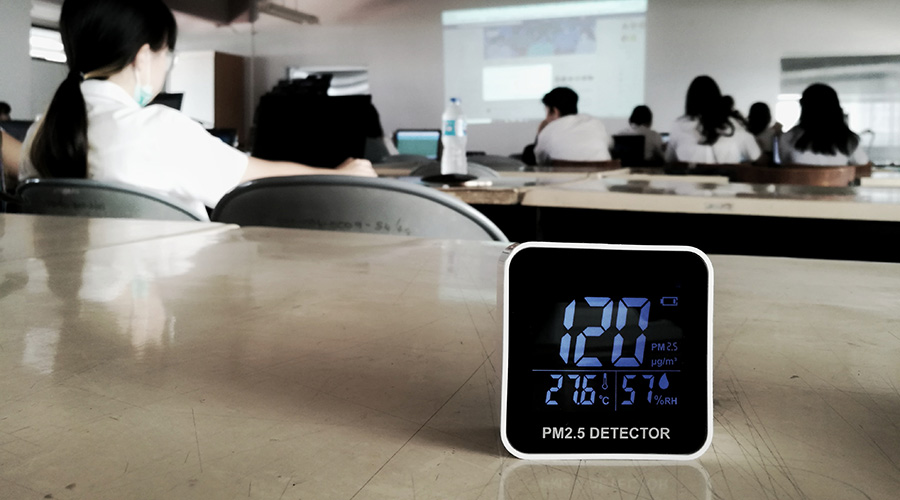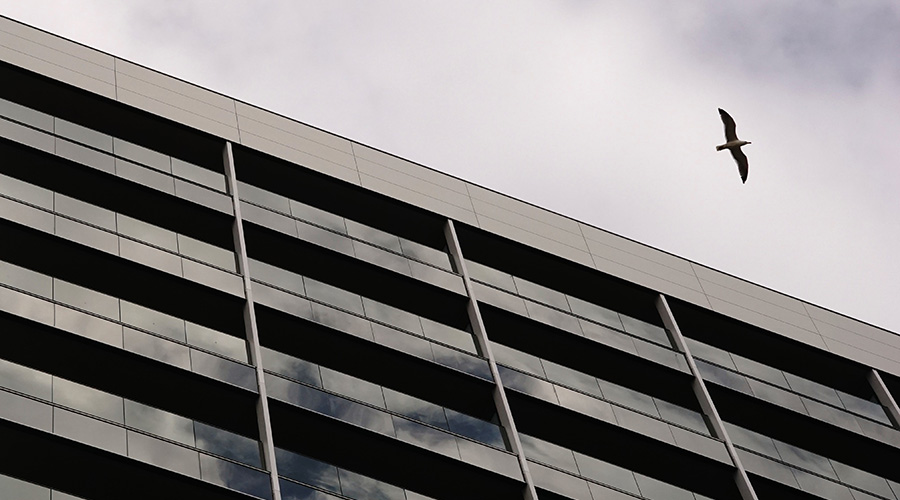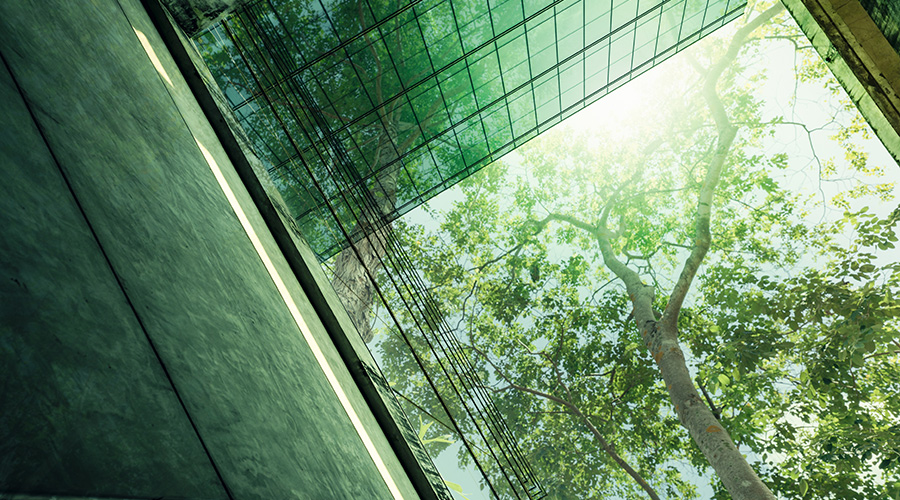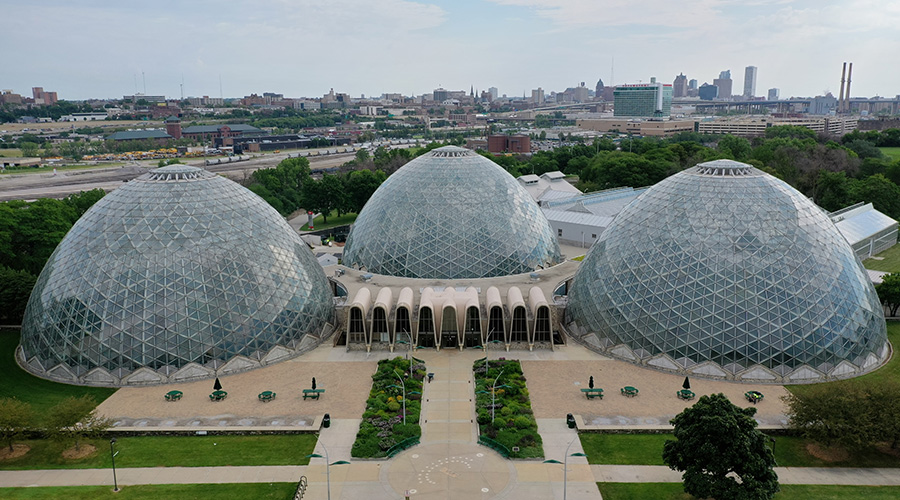
Horticulture Management Inside Milwaukee's Historic Domes
The domes house over 1,800 different plant species in a conoidal glass structure. August 19, 2024
By Mackenna Moralez, Associate Editor
In the heart of Milwaukee’s downtown sits three spherical buildings labeled as a “must visit” attraction to tourists and locals alike.
The Mitchell Park Horticultural Conservatory – also known as the Domes – is a living plant museum with over 1,800 plant species that can be found across the world, according to its website. The domes consist of three separate conoidal glass structures that provide three different experiences. The Tropical and Desert Dome display a global collection of wild species and horticultural varieties from those environments. The Floral Show Dome is changed five times a year to display cultivated annuals. There are also six working greenhouses that propagate and grow most of the Show Dome Material.
While other facilities that range in the same size as the domes usually have a larger grounds team, there are only six full-time horticulturists, a horticulture manager and upward of two seasonal horticulturists on staff.
“Two horticulturists are responsible for the greenhouses, and there is one horticulturist responsible for each dome,” says Justine Miller, horticulturist, Arid Collection for the Mitchell Park Horticultural Conservatory. “One horticulturist maintains the outdoor gardens and is also responsible for maintaining the domes plants not currently on display.”
Each horticulturist specializes in a particular area of the conservatory, Miller explains. They each go about their day independently for the most part, watering, pruning, deadheading and weeding the facilities. The Domes uses a combination of slow-release granular fertilizer and a water-soluble fertilizer that is mixed into the irrigation water. Similar to the watering schedules, how often the plants are fertilized depends on species and time of year.
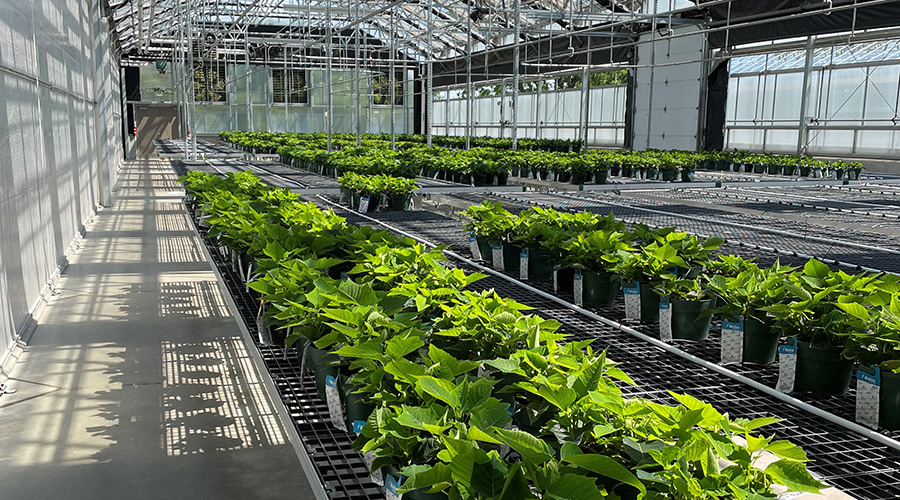
“The horticulturists in charge of each dome each have a different watering schedule,” says Miller. “The time of year, weather conditions, and plant species are all taken into consideration when determining when to water, and how much. Typically, the Tropical Dome gets a lot of water each day. The Desert Dome, however, is only watered about once a week during the summer, and much less, closer to once a month, during the winter. The show dome generally gets watered more in the summer than in the winter as well, and this is due to both the summer heat and the types of plant material we use in the summer vs. the winter.”
Even though the facility requires large amounts of water, the horticulturalists strive to be sustainable with their usage. The greenhouse facility has a rainwater harvesting system that redirects rainwater from 1.25 acres of roof area into four 20,00-gallon underground storage tanks. The water is the reused for irrigation in the greenhouses. Miller explains that additional water conservation improvements include permeable pavers in the plaza and a 1,100 square-foot green roof over the education center.
The Domes are also set to a temperature that best mimic the natural environments that the plants would normally grow in. Miller explains that in the Desert Dome, temperatures are kept cooler in the winter and then gradually warm up in the spring. While the facility has heating for the brisk Wisconsin winters, the only cooling mechanisms that can be used during the summer are fans and vents.
“Due to the shape of the glass structures, a lot of heat can get trapped in the summer, despite efforts to keep it at a set temperature,” Miller says. “In addition to temperature, the Tropical Dome also has a misting system that is set at different intervals according to season, to maintain humidity.”
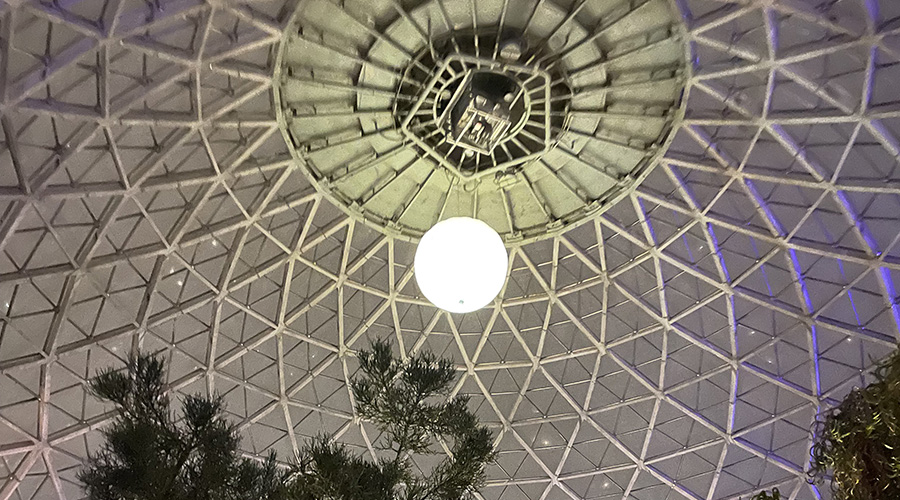
Lighting can also be an issue for the domes as well as they don’t have supplemental lighting. Miller explains that in the Tropical Dome the larger canopy trees can grow so quickly that they block out a lot of the natural sunlight from the understory. The horticulturalists prune most of the large trees twice a year to allow for more sunlight to reach the lower-grading plants.
“Most of our outdoor gardens are planted with perennials, so they are well-established and don’t require a lot of supplemental watering as annuals do,” says Miller. “Many of the plants are natives or cultivars of natives, so they are naturally adapted to the local climate conditions and pests, and don’t require a lot of inputs.”
Since the Domes age and unique structural design has led to long-term maintenance issues over the years, Miller says. The facility was closed for a period of time due to spalling concrete from leaks. Wire mesh had to be installed in all three structures to catch any falling debris. The mesh and concrete are inspected regularly to ensure the safety of the facilities.
“The long-term maintenance of the facility has been an ongoing conversation for many years,” Miller says. “Ultimately, funding is being sought to restore the Domes and allow for more sustainable maintenance going forward. The Parks have had a budget deficit for many years, with deferred maintenance costs piling up by many millions of dollars. Various solutions to our financial troubles are being explored, but it has been a challenge for a very long time. We all take great pride in our work and do all that we can to provide a great visitor experience. Although there are unique maintenance challenges associated with our facility, it is an educational experience for students, a tourist destination, and a beloved Milwaukee institution.”
Mackenna Moralez is the associate editor for the facilities market.
Next
Read next on FacilitiesNet











